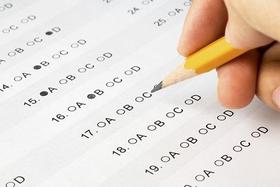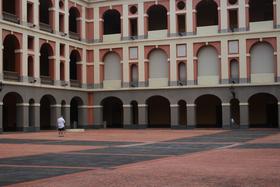Top Rankings
Cape Flattery School District ranks among the top 20% of public school district in Washington for:
Category
Attribute
Diversity
Most diverse schools (Top 1%)
For the 2025-26 school year, there are 2 public high schools serving 315 students in Cape Flattery School District. This district's average high testing ranking is 1/10, which is in the bottom 50% of public high schools in Washington.
Public High Schools in Cape Flattery School District have an average math proficiency score of 16% (versus the Washington public high school average of 34%), and reading proficiency score of 36% (versus the 65% statewide average).
Public High School in Cape Flattery School District have a Graduation Rate of 74%, which is less than the Washington average of 84%.
The school with highest graduation rate is Neah Bay Junior/ Senior High School, with ≥80% graduation rate. Read more about public school graduation rate statistics in Washington or national school graduation rate statistics.
Minority enrollment is 86% of the student body (majority American Indian), which is more than the Washington public high school average of 50% (majority Hispanic).
Overview
This School District
This State (WA)
# Schools
4 Schools
859 Schools
# Students
493 Students
392,562 Students
# Teachers
39 Teachers
19,037 Teachers
Student-Teacher Ratio
13:1
13:1
Student By Grade
District Rank
Cape Flattery School District, which is ranked within the bottom 50% of all 306 school districts in Washington (based off of combined math and reading proficiency testing data) for the 2022-2023 school year.
The school district's graduation rate of 90% has stayed relatively flat over five school years.
Overall District Rank
#244 out of 307 school districts
(Bottom 50%)
(Bottom 50%)
Math Test Scores (% Proficient)
26%
41%
Reading/Language Arts Test Scores (% Proficient)
38%
53%
Science Test Scores (% Proficient)
30-34%
49%
Graduation Rate
(21-22)≥90%
84%
Students by Ethnicity:
Diversity Score
0.68
0.68
% American Indian
48%
2%
% Asian
1%
8%
% Hispanic
21%
26%
% Black
n/a
5%
% White
10%
50%
% Hawaiian
n/a
1%
% Two or more races
20%
8%
All Ethnic Groups
District Revenue and Spending
The revenue/student of $26,813 is higher than the state median of $18,796. The school district revenue/student has grown by 5% over four school years.
The school district's spending/student of $24,669 is higher than the state median of $19,247. The school district spending/student has grown by 5% over four school years.
Total Revenue
$13 MM
$20,715 MM
Spending
$12 MM
$21,212 MM
Revenue / Student
$26,813
$18,796
Spending / Student
$24,669
$19,247
Best Cape Flattery School District Public High Schools (2025-26)
School
(Math and Reading Proficiency)
(Math and Reading Proficiency)
Location
Quick Facts
Rank: #11.
Clallam Bay High & Elementary School
(Math: 20-24% | Reading: 40-44%)
Rank:
Rank:
3/
Bottom 50%10
16-933 Hwy 112
Clallam Bay, WA 98326
(360) 963-2324
Clallam Bay, WA 98326
(360) 963-2324
Gr: K-12 | 119 students Student-teacher ratio: 11:1 Minority enrollment: 64%
Rank: #22.
Neah Bay Junior/ Senior High School
(Math: 10-14% | Reading: 30-34%)
Rank:
Rank:
1/
Bottom 50%10
3560 Deer Street
Neah Bay, WA 98357
(360) 645-2221
Neah Bay, WA 98357
(360) 645-2221
Gr: 6-12 | 196 students Student-teacher ratio: 13:1 Minority enrollment: 99%
Recent Articles

2025 Classroom Size Trends: Are Classes Still Growing?
A 2025 update on U.S. classroom sizes, policy battles, student outcomes, and whether class sizes continue to expand.

Personalized Learning in 2025: Revolutionizing Education
Explore how personalized learning is reshaping education in 2025—insights, policy, impact, and real-world models for students, parents, and educators.

How Bullying Impacts Student Academic Performance in 2025
Explore how bullying harms student achievement, attendance, and well-being — and strategies schools use in 2025 to mitigate its effects.





